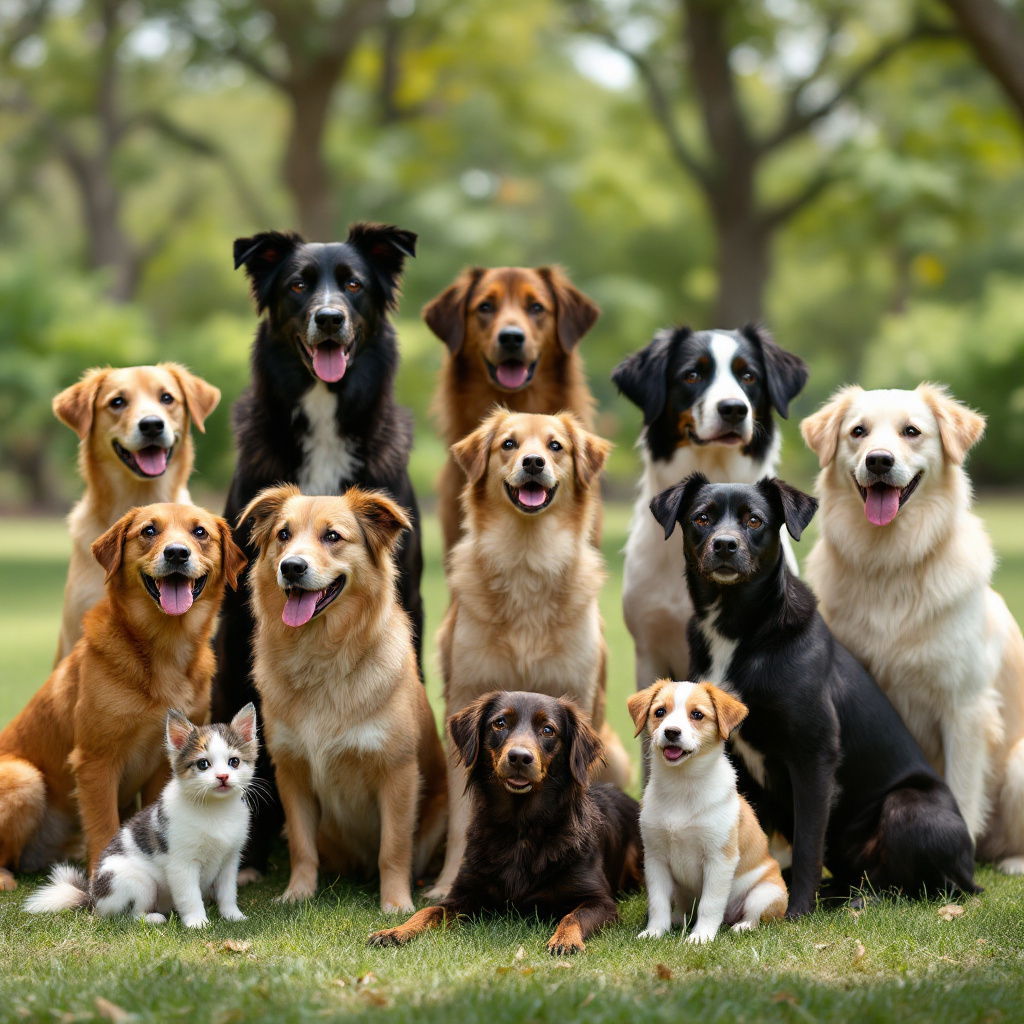Characteristics of rare dog breeds: A unique insight into the world's most fascinating dogs
The world of dog breeds is as diverse and colourful as a paint box. While many of us immediately think of Labradors, Golden Retrievers or German Shepherds, there are still a large number of unusual breeds that you don't see on every street corner. Curious yet? Fantastic! In this article, we take a look at the characteristics of these rare jewels of the dog world. Find out why they are so unique, what care they need and why they might even be perfect for you.
Physical characteristics: Rare and impressive
Before we dive into the nature and character of these dogs, we should take a look at their physical features. It is often precisely these that set them apart from the better-known representatives of their species.
- Unusual appearanceMany rare dog breeds have distinctive facial features. Take the Catalburun, for example. This dog is known for its split nose, which looks as if it has been divided into two parts.
- Size and proportionsThe Azawakh is another rarity - an elegant, slender sighthound originating from the Sahara. Its tall stature and long legs make it an outstanding runner.
- Robust body structureThe Norwegian Lundehund has remarkably flexible joints and at least six toes on each paw, which helps it to climb steep cliffs.
These unique characteristics give rare dog breeds an individual charm that makes them absolutely remarkable!
Behaviour and character: Usually unconventional
The peculiarities of the rare dog breeds are not limited to their appearance. There are also fascinating differences to be observed in their temperament.
- Unique instinctsThe Caucasian Ovcharka is known for its protective instinct. It was originally a guard dog for herds in the mountains of Eastern Europe and is therefore an excellent guard dog even by today's standards.
- Attachment and societyThe Mudi, an amazing Hungarian cattle dog, is known for its close bond with its owner and its willingness to please. He loves mental challenges and needs sufficient mental exercise.
- Independent beingThe Kai Ken, often referred to as a tiger dog because of its brindle coat, is known for its independence but remains loyal to its family.
These behavioural traits can be challenging on the one hand, but at the same time they make such breeds very interesting for those looking for a companion with character.
Care and attitude: challenges and rewards
Keeping a rare breed of dog can bring special challenges. But don't worry, every challenge is rewarded by the unique bond you can form with your furry companion.
- Nutritional requirementsRare breeds may have specific nutritional needs due to their genetic origin. Some may benefit from a special diet, while others may be more flexible in their diet.
- Activity levelOtter dogs, for example, which seem to be born in the water, need regular swimming outings for a happy dog's life. Insufficient exercise could lead to boredom and negative behaviour.
- Maintenance effortDepending on the coat type, the amount of grooming required also varies. A long-haired dog needs regular brushing, while smooth-haired breeds require less effort.
Before you embark on the adventure of a rare breed, you should be prepared to invest the necessary effort. But the joy you get back from your faithful companion is priceless!
Rescue and animal welfare organisations for rare dog breeds
And now we come to an important point: animal welfare. Rare dog breeds are often not as overbred as fashionable dogs, which benefits their health. Nevertheless, some of these breeds need our help when they are in need.
- Rescue organisationsMany specialised organisations have set themselves the task of protecting rare breeds. These organisations not only offer help with adoption, but also valuable information for interested parties.
- Sustainable attitudeIf you decide to keep a rare breed, you should not lose sight of the issue of breeding. Responsible breeders endeavour to preserve the healthy genes and typical characteristics of rare breeds.
By choosing a rare breed, you are not only helping to keep a breed alive, but also to promote its unique character and health.
Conclusion: Are rare dog breeds the right choice for you?
Rare dog breeds are like rare jewels; they require special attention but also offer unrivalled value. The unique characteristics of rare dog breeds, both physically and character-wise, can be the perfect addition to your life if you are willing to adapt to their unique needs.
Before deciding on such a breed, it is wise to research carefully and perhaps even consult with rescue organisations or breeders. And you should keep one thing in mind: Your furry friend will thank you many times over in his own way!
FAQs
What is the rarest dog in the world?
Which is the rarest dog breed in the world? Due to their rarity, the few examples of rare dog breeds that exist cannot be counted exactly. However, the Azawakh, Otterhound and Chinook are definitely among the rarest dog breeds.
What are special dog breeds?
Almost everyone knows Golden Retrievers, Dachshunds, Poodles and Chihuahuas, but only a few people are familiar with breeds such as Sloughi, Mudi or Västgötaspets. They are among the special dog breeds and are not only unknown to many, but also astonish with special characteristics such as six toes, oily fur or a double nose.
Are all dogs the same or are there breed-specific characteristics?
Are all dogs the same or are there breed-specific characteristics? All dogs are the same. ☒ Depending on the breed, dogs have different dispositions. Different breeds differ not only in their external appearance, but also in their characteristic traits and behavioural patterns.
Which rare dog breeds are suitable for home ownership?
Some rare dog breeds that are well suited to flat living are the Chinook and the Kai Ken, as they have moderate exercise needs and can be happy in smaller spaces with sufficient mental stimulation.
Do rare dog breeds need special care?
Yes, some rare dog breeds need special care, especially when it comes to grooming or exercise. The Mudi, for example, needs a lot of mental exercise and activity to stay balanced and happy.
Author
-

David is a passionate aquarist with more than 20 years of experience in setting up and maintaining freshwater and saltwater aquariums. He specialises in the biodiversity of aquatic ecosystems, aquascaping and the species-appropriate keeping of aquarium fish. His articles on haustierewissen.de are a treasure trove for aquarium enthusiasts looking for sound advice and creative ideas for their underwater worlds.
View all posts




